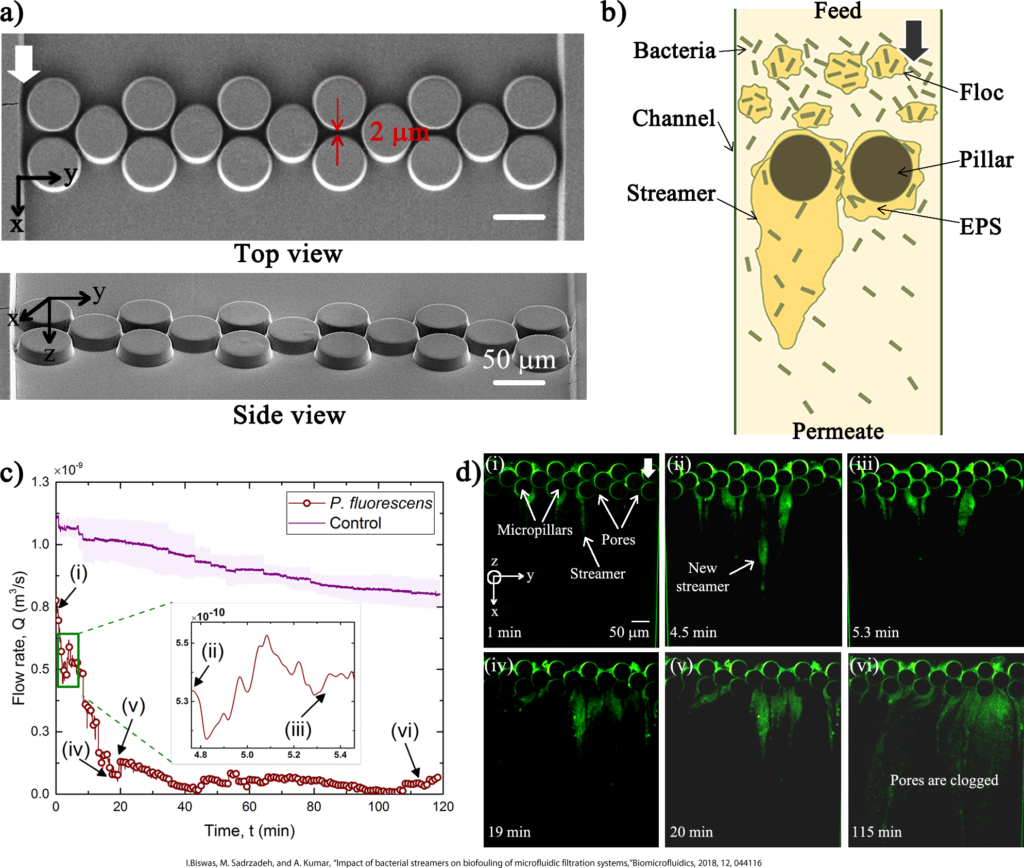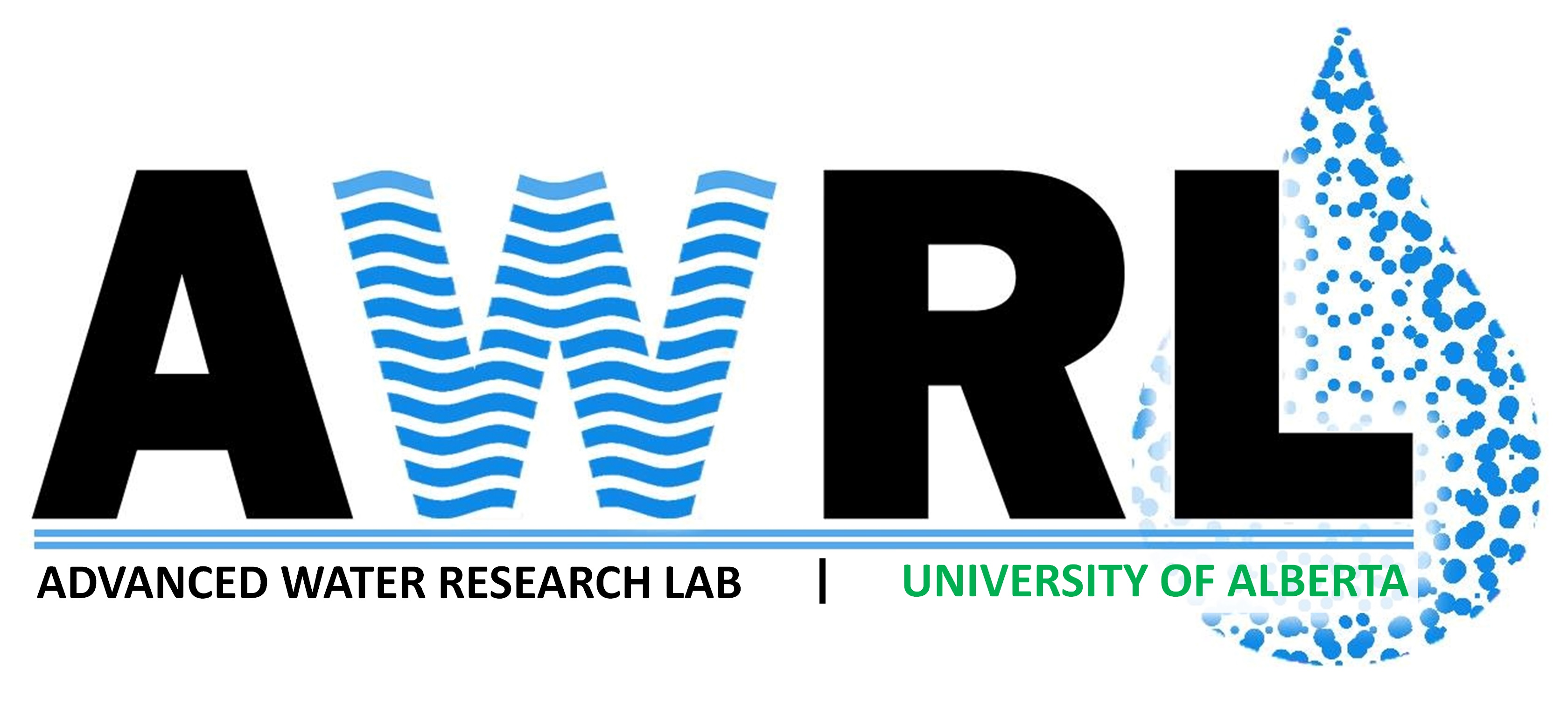Fouling in microfluidic filtration systems
The high susceptibility of membranes to fouling is the most significant obstacle to the development of sustainable and energy efficient membrane processes. Fouling results from the adsorption of particles, organic matter, and microorganisms onto the membrane surface and/or within the membrane pores. It significantly reduces membrane performance and longevity as well as flux and water quality and subsequently increases operating costs. Among all kinds of fouling, biofouling is considered the most severe because of its dynamic nature. Even a few surviving cells that adhere to the membrane’s surface multiply exponentially at the expense of biodegradable substances in the feed solution.
Microfluidic devices allow us to study and understand how particles and bacteria attach to and colonize membrane surfaces. Microfluidic mimic in fouling study allows the real time observation of biofouling phenomena inside the system through microscopy. Fluorescent particles can be utilized for particle tracking to understand the mechanism of colloidal fouling better.


